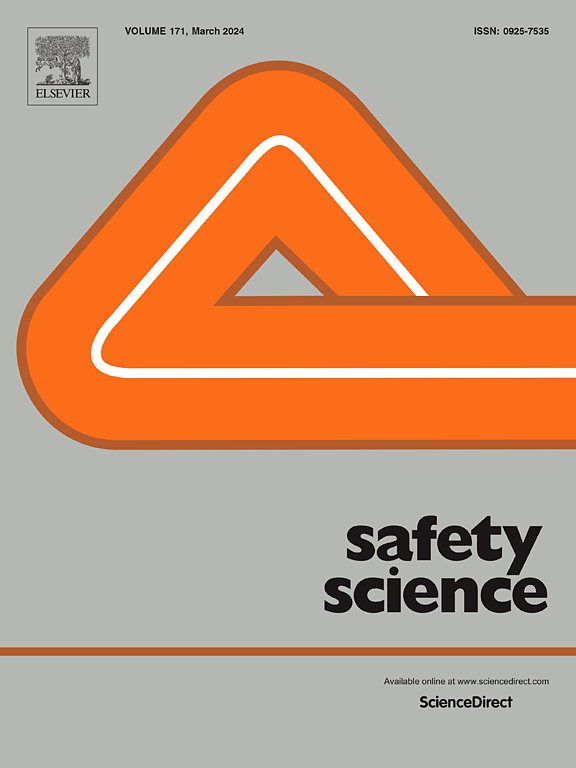Assessing proxemics impact on Human-Robot collaboration safety in construction: A virtual reality study with four-legged robots
IF 4.7
1区 工程技术
Q1 ENGINEERING, INDUSTRIAL
引用次数: 0
Abstract
Recent advancements in four-legged robots have prompted their integration into the construction industry, yet the safety implications of their deployment remain inadequately explored. As such comprehensive investigations are required to ensure the safety of robot deployment and the well-being of construction professionals who work with and alongside these robots. This study addresses this gap by conducting a user-centered experiment employing virtual reality to assess human behavior and safety impacts in varying interaction spaces with four-legged robots within a simulated construction environment. By employing objective and subjective measures, including physiological and attentional responses, emotional reactions, situational awareness, risk perceptions, and attitudes towards robots, this study analyzes the impact of proxemics on construction individuals at two distinct interaction spaces: proximal (1.5 – 4 ft) and distal (12 – 25 ft) from the four-legged robots. The study found that while participants’ physiological responses, emotional states, situational awareness, risk perceptions, and attitudes towards robots were not significantly influenced by four-legged robot interaction space, those in the distal group allocated significantly more attention to the robot, particularly in terms of fixation count, indicating a significant proxemics impact on attentional states. These findings shed light on the safety implications of human-robot collaboration on jobsites, contributing to the advancement of safe and efficient practices in construction settings.
评估近程技术对建筑施工中人机协作安全的影响:四足机器人虚拟现实研究
四足机器人的最新进展促使它们融入了建筑行业,但对其部署的安全影响仍未进行充分探讨。因此,需要进行全面调查,以确保机器人部署的安全性,以及与这些机器人一起工作的建筑专业人员的福祉。本研究针对这一空白,开展了一项以用户为中心的实验,采用虚拟现实技术,在模拟施工环境中评估人类在与四足机器人的不同交互空间中的行为和安全影响。通过采用客观和主观测量方法,包括生理和注意力反应、情绪反应、情景意识、风险感知和对机器人的态度,本研究分析了在两个不同的交互空间中,近距离机器人对建筑工人的影响:与四足机器人的近距离(1.5 - 4 英尺)和远距离(12 - 25 英尺)。研究发现,虽然参与者的生理反应、情绪状态、情境意识、风险感知和对机器人的态度并未受到四脚机器人交互空间的显著影响,但远距离组的参与者对机器人的注意力分配明显更多,特别是在固定次数方面,这表明近距离对注意力状态有显著影响。这些发现揭示了人机协作对工作场所安全的影响,有助于促进建筑环境中安全高效的实践。
本文章由计算机程序翻译,如有差异,请以英文原文为准。
求助全文
约1分钟内获得全文
求助全文
来源期刊

Safety Science
管理科学-工程:工业
CiteScore
13.00
自引率
9.80%
发文量
335
审稿时长
53 days
期刊介绍:
Safety Science is multidisciplinary. Its contributors and its audience range from social scientists to engineers. The journal covers the physics and engineering of safety; its social, policy and organizational aspects; the assessment, management and communication of risks; the effectiveness of control and management techniques for safety; standardization, legislation, inspection, insurance, costing aspects, human behavior and safety and the like. Papers addressing the interfaces between technology, people and organizations are especially welcome.
 求助内容:
求助内容: 应助结果提醒方式:
应助结果提醒方式:


